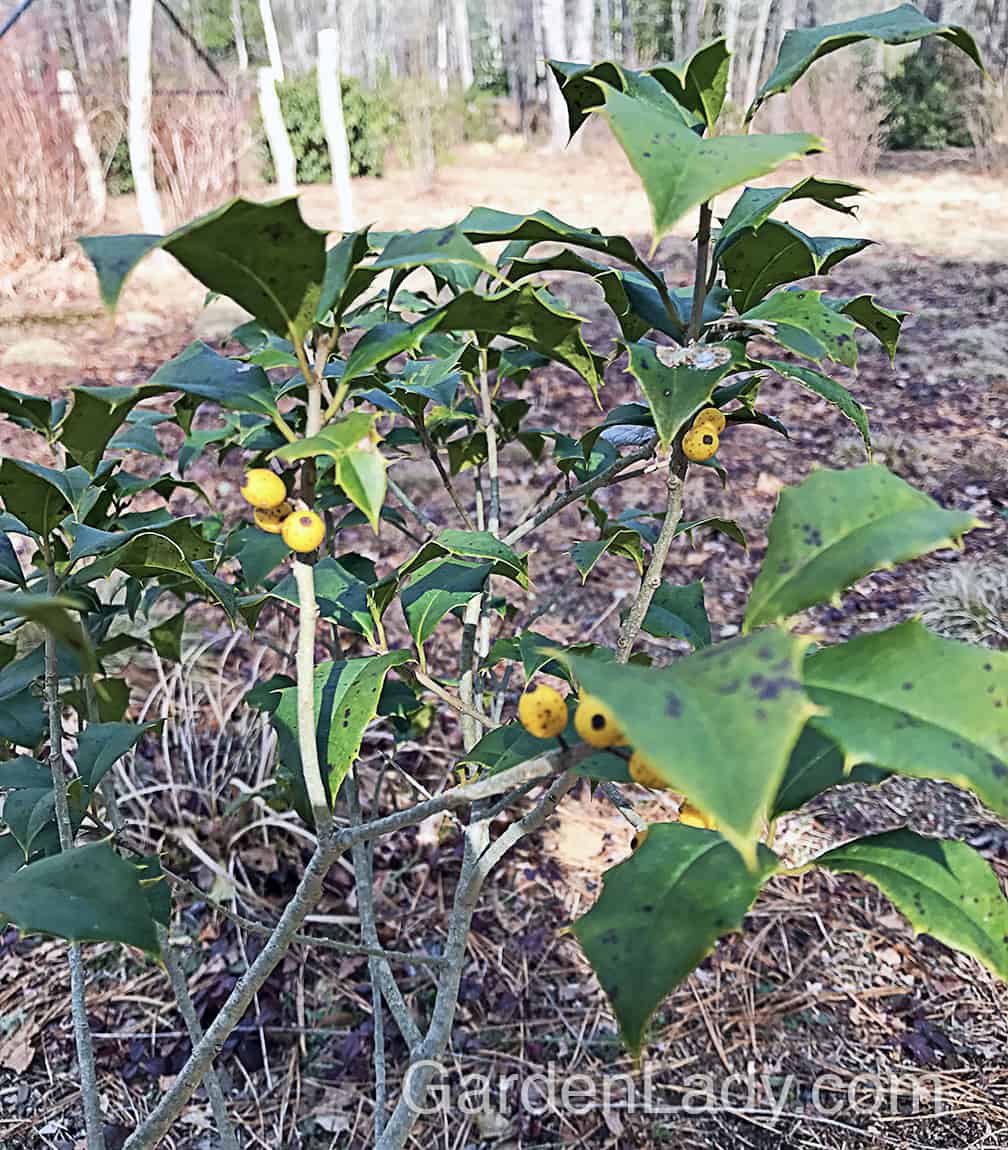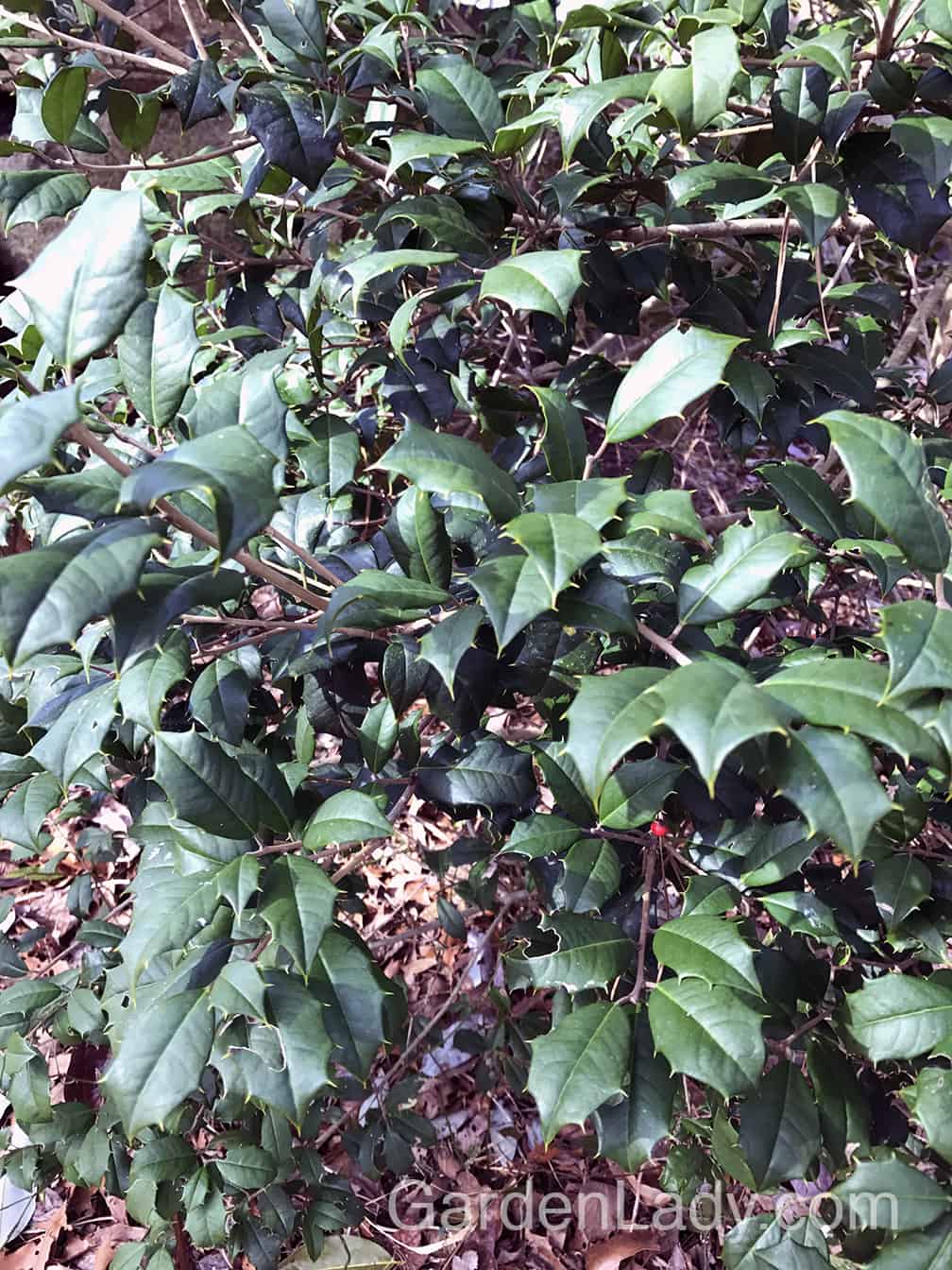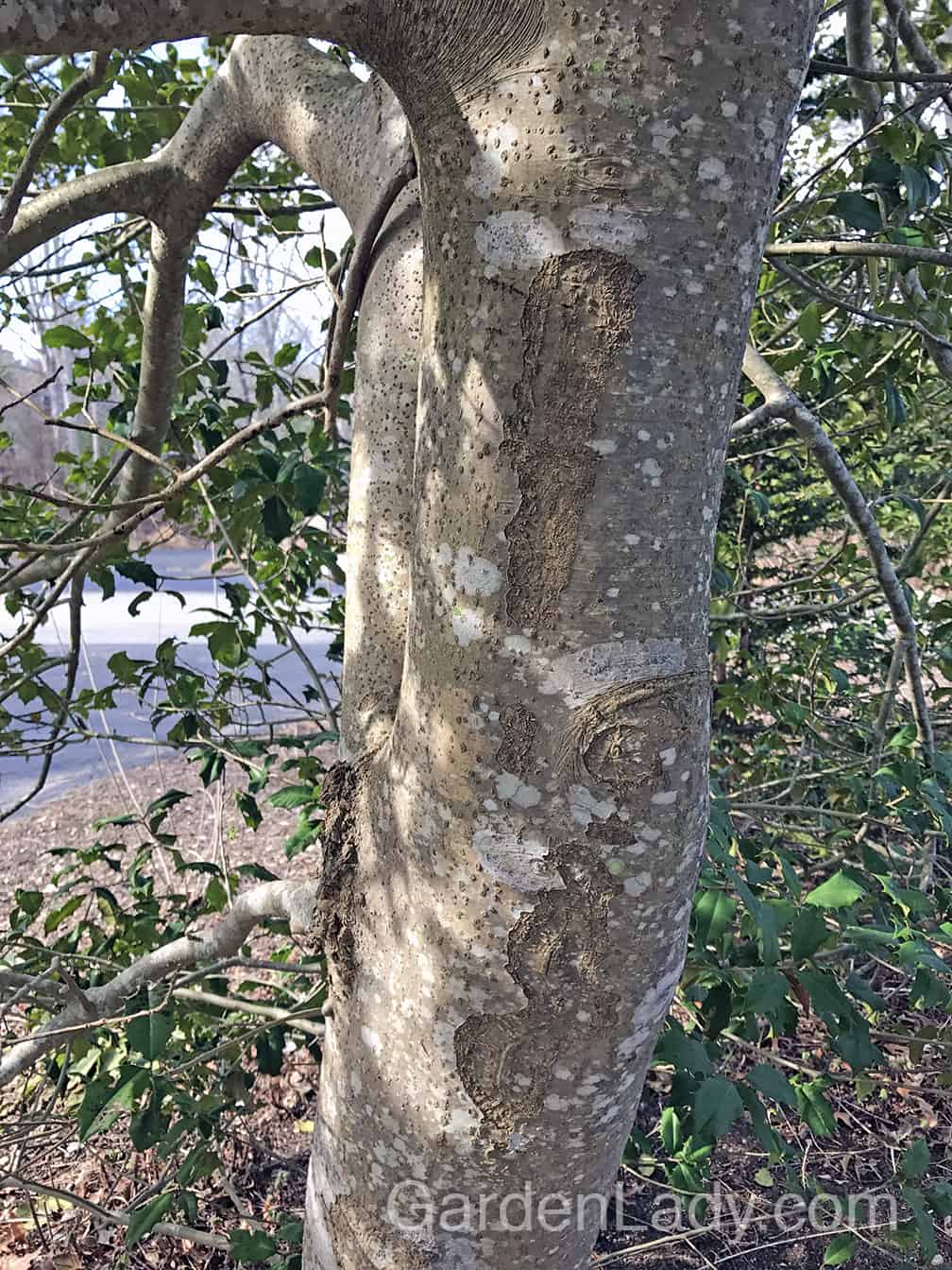Imagine: Beth and John loved the stand of American holly trees in their backyard. On summer evenings the light grey trunks were visible as they sat on their patio. In the winter Beth loved how the green holly leaves blocked the view of the bare hedge and her neighbor’s house behind them. And at Christmas time she and John pruned berry-laden branches and brought a big bouquet into Beth’s mother’s apartment in the city.
But on this February day their small holly grove was mob scene. “John!” Beth called. “You’ve got to see this. There’s a riot going on in our backyard.”
The ground under the hollies was filled with robins. Over a hundred birds. Not the, oh-it’s-a-sign-of-spring robins. These were not birds flying up from the south because winter was ended. No, these were birds come down from the north. These were robins looking for a good time. These were robins gathered en masse to feast on the fermented berries of Ilex opaca. John looked at the swirling mass of red breasts and flapping wings and declared, “Spring Break Birds.”
Name: Ilex opaca aka American Holly
Type of Plant: Evergreen tree native to the eastern US from Massachusetts down to central Florida. Hardy in zones 5-9. Females have berries. This tree commonly grows 20 to 30 feet but has been seen much taller in the wild.
Why I love this: This tree brings a lot to the party. It’s evergreen, so even in January and February when much of the landscape looks tired and ragged, these trees are still spiffy. I also love their very attractive mottled, grey trunks. And best of all, this plant feeds the birds at the time of year when they need food the most.
American holly grows well in full sun or part-shade. They vary widely in form…some are more compact while others are tall and thin.
A Word to the Wise: In order for this tree to have dark green leaves it needs to grow in acidic soil. So don’t lime a lawn around native holly trees. Know that in the spring when the new foliage starts pushing out, many of the older leaves turn yellow and fall. Since these fallen leaves are prickly, you’ll want to avoid working in the gardens just underneath native hollies in May and early June. So under-plant hollies with weed-smothering perennials such as Eurybia divaricata (white wood aster, also native), Geranium macrorrhizum, Epimedium and Hosta. That way the holly leaves can fall and these plants will emerge and cover them up for the most part…little maintenance required.

There are varieties of American holly with yellow berries. The birds don’t eat these until after the red ones are gone.

Ilex opaca self-seeds well. Watch for small plants that spring up and move them to places where you’d like new holly trees to grow. Sometimes they seed underneath established plants, as this tree did. I’ll prune these small plants out in the spring.

When growing in fairly fertile but acid soils the leaves are dark green. There is one berry that the drunken robins overlooked on this tree…

The bark on American holly is especially attractive.

Hello! I think I heard you on MARGARET Roach’s podcast, she’s one of my heroes. Anyhow, I too love American holly, but I’m considering planting two on either side of my front porch in a foundation bed. Please talk me down or tell me if this is crazy. Thank you!
Amanda,
I haven’t been on Margaret Roach’s podcast although I’d be honored to do so. American holly is not the plant for your foundation planting, however. It’s a TREE. I’m looking at one outside my living room window right now that is about 25 feet tall. You should choose something smaller. Check out Gem Box or Strong Box holly instead: https://www.provenwinners.com/plants/ilex/gem-box-inkberry-holly-ilex-glabra Also a native, but a better choice for your foundation planting.